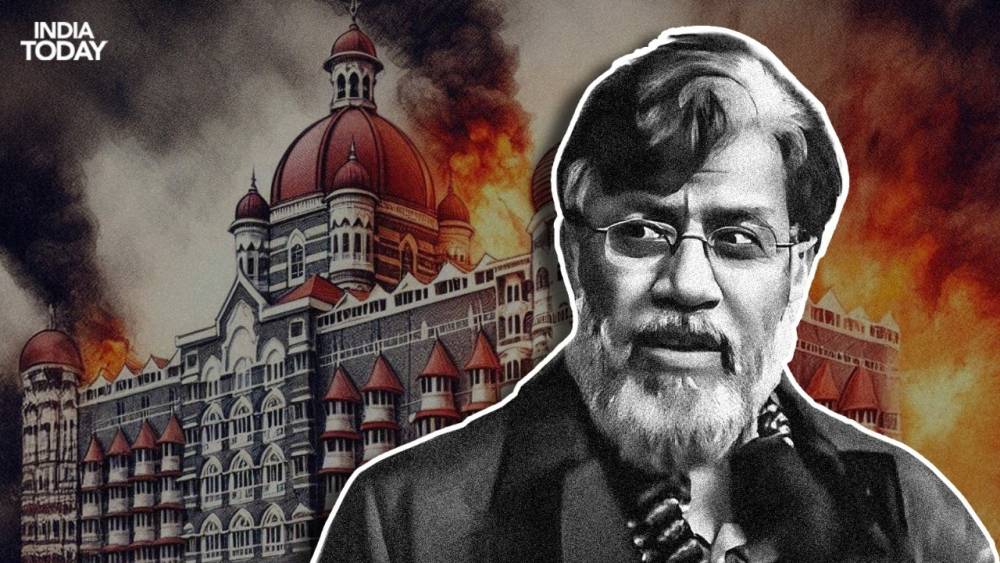
Mumbai, April 10:
In a critical breakthrough in India’s pursuit of justice for the 26/11 Mumbai terror attacks, the 2016 video deposition of David Coleman Headley, a key accused and Lashkar-e-Taiba operative, played a pivotal role in establishing the involvement of Tahawwur Rana in the planning and facilitation of the deadly attacks. Headley’s statements, given under oath before a special Mumbai court via video conference from an undisclosed location in the United States, revealed the depth of Rana’s complicity and highlighted his active role in enabling the operations that led to one of India’s deadliest terror strikes.
David Headley, an American national of Pakistani origin, admitted to being deeply involved with Lashkar-e-Taiba and the Inter-Services Intelligence (ISI) of Pakistan. During his detailed deposition, he spoke at length about his childhood friend Tahawwur Rana, a former Pakistani military doctor who had migrated to the US and owned an immigration services business — First World Immigration Services — with branches in Chicago and elsewhere.
Headley revealed that it was with Rana’s express permission that he opened a First World office in Mumbai, which served as a cover for his surveillance activities. According to Headley, the reconnaissance he carried out under this business front laid the groundwork for the 26/11 attacks. He visited India eight times before the attack and once afterward, meticulously scouting potential targets, including the Taj Mahal Palace Hotel, Oberoi Trident, and Chhatrapati Shivaji Terminus, even going so far as to take boat tours around Mumbai’s harbor and socialize with Bollywood celebrities to deepen his cover.
The US Federal Bureau of Investigation (FBI) supported Headley’s claims with documents, emails, and Rana’s post-arrest statements from 2009. In those statements, Rana admitted to being aware that Lashkar was a terrorist organization and that Headley had attended their training camps in Pakistan. Despite being acquitted in the United States of direct involvement in the Mumbai attacks, Rana was convicted for helping Headley plan an attack against a Danish newspaper that had published controversial cartoons of Prophet Muhammad.
The Indian prosecution, led by Special Public Prosecutor Ujjwal Nikam, emphasized that Headley's testimony left no ambiguity regarding Rana’s role. “Rana not only knew what Headley was doing — he actively helped him by facilitating the Mumbai office, preparing fake documentation, and guiding him on visa procedures,” Nikam told the court.
The deposition was also significant for shedding light on the role of Pakistan’s intelligence agency, ISI. Headley identified two ISI officers, Major Iqbal and Major Ali, who he claimed coordinated with Lashkar commander Sajid Mir — the man he described as his handler. He detailed the chain of command, stating he trained under Hafiz Saeed and Zaki-ur-Rehman Lakhvi, both masterminds of the Mumbai carnage that left over 160 dead and hundreds injured.
Headley’s revelations came during the trial of another accused, Zabiuddin Ansari alias Abu Jundal, believed to have operated from a control room in Karachi during the attacks. Ansari, who had a distinct Indian accent, is also linked to the 2006 Aurangabad arms haul and other terror-related cases.
The Headley-Rana connection and their joint operations exposed a complex web of global terror collaboration, extending from Pakistan to the United States and finally to India. Headley's cooperation as an approver not only unraveled critical details of the 26/11 plot but also reignited India’s demand for Rana’s extradition to face trial on Indian soil.
With Rana now facing extradition proceedings in the US once again, Indian authorities remain hopeful that he will be brought to justice in Mumbai — the city that bore the brunt of the attacks and continues to seek closure.